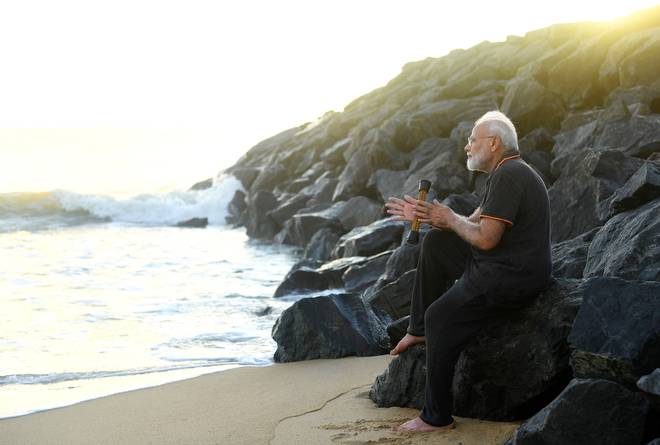Addressing the nation from the ramparts of the Red Fort on the 73rd Independence Day, Prime Minister Narendra Modi had urged people to visit at least 15 tourist destinations within the country by 2022. He had said that India has so much to offer and if domestic tourism increases, international footfalls too will increase. And true to his words, he has been taking forward the mantle of being country’s biggest tourism ambassador with sheer determination.
Xi Jinping, the Chinese President who arrived in India on Friday on a two-day informal meet, the second after the one in Wuhan earlier in April 2018, was taken to Mahabalipuram in the state of Tamil Nadu where he visited historical places like Arjuna’s Penance, Panch Rathas and Shore Temple. Xi also attended a cultural programme at the Shore Temple in the evening, followed by a dinner hosted by PM Modi whose fancy menu is doing the rounds of social media. Interestingly, this is not the first time that PM Modi has hosted a foreign leader outside the traditional locations like Delhi and Agra, which earlier used to be the norm. The unique blend of diplomacy that PM Modi has introduced in his term has certainly added a new flair and zing to the foreign affairs of the country. His presence is incredible and works wonders wherever he goes as it grabs the eyeballs, which in turn increases the tourism of the area.
Opening the doors of ‘Incredible India’ to the world, in the last five years, dignitaries from across the world have had a first-hand experience of Indian hospitality in different parts of the country which has been great for the promotion of Indian culture.
During the last visit of the Chinese President Xi, he was welcomed in Ahmedabad where he visited the majestic Sabarmati riverfront. The iconic images of two leaders taking a leisurely stroll and talking casually on a swing had became the talking point of the town. Modi’s effortless yet nuanced diplomacy is a lesson in itself for the political leaders across the country. Earlier, PM Modi had also hosted Japanese President Shinzo Abe and the First Lady in Varanasi where both Modi and Abe had participated in Ganga Aarti at the Dashashwamedh Ghat. The French President, Emmanuel Macron had visited Varanasi and Mirzapur in Uttar Pradesh with PM Modi, German Chancellor Angela Merkel was hosted in Bengaluru’s Bosch Research Centre. The then Israeli PM Benjamin Netanyahu and whom PM Modi very kindly refers to as “friend”, was also hosted in Ahmedabad.
In May 2019, right before the Lok Sabha election results, PM Modi had spent a day meditating at the Rudra Caves, barely a kilometer from the Kedarnath shrine in Uttarakhand. The Rudra Caves which the PM visited has attracted a massive deluge of tourists from different parts of the country. The cave maintained by the Garhwal Mandal Vikas Nigam (GMVN) has said that the tourists have pre-booked the cave till October, solely after seeing pictures of PM Modi peacefully meditating in the cave. Immediately after PM Modi’s visit, the caves received four bookings in the month of May, followed by 28 bookings in June, 10 in July, 8 in August, 19 in September and 10 in October. “We are sure to get many more bookings for September and October till Diwali even when it is extremely cold. After that we will take bookings for May 2020,” a senior official of GMVN had told The Hindu.
It is beyond any doubt that PM Modi has defied the age-old and boring tradition of diplomacy which only centred around the Lutyen’s Delhi. Who would have thought that a Prime Minister would be hosting a state head of China in the distant coastal town of Mahabalipuram. Only PM Modi has dared to think beyond the box and in true sense, he is the biggest tourism ambassador of the country and he takes a lot of pride in showcasing the Indian culture as we saw with him donning the traditional dress code of Tamils, the ‘dhoti’ and ‘angavastram’ with such finesse and grace whilst meeting the Chinese president.
